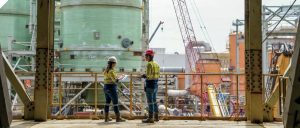
Pyrite-based acid production
While sulphuric acid production is dominated by sulphur burning or metallurgical acid routes, pyrite roasting remains a niche sector, particularly in China.

While sulphuric acid production is dominated by sulphur burning or metallurgical acid routes, pyrite roasting remains a niche sector, particularly in China.
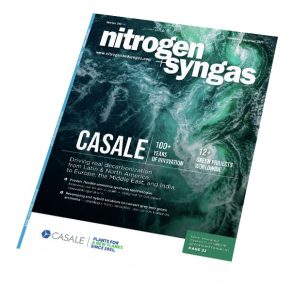
As I write this editorial, the 30th meeting of the Conference of the Parties (COP) to the UN Framework Convention on Climate Change – aka COP-30 – is taking place in Brazil. It is fair to say that the attempt to try to restrict a large greenhouse gas-driven temperature rise across the planet has become one of the defining issues of our age, and particularly for an energy-intensive industry such as our own, responsible as it is for up to 2% of global carbon and carbon equivalent emissions. The move towards lower carbon intensity production of hydrogen, ammonia and methanol, via carbon dioxide capture and sequestration, gasification of biomass or waste, or electrolysis of water using renewable power, has come to dominate our news coverage, and in this issue we also carry articles on the state of play of both ‘blue’ and ‘green’ ammonia production, as well as technology for ‘cracking’ ammonia back to hydrogen and nitrogen for its potential use as a hydrogen carrier.
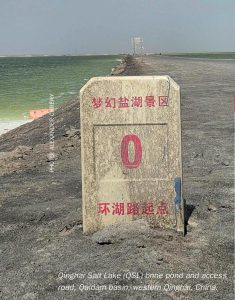
In this CRU Insight, Alexander Chreky reports on China’s potash industry – and reviews the country's international potash investments.
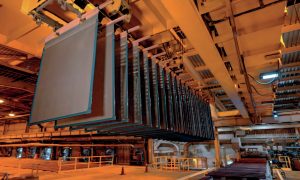
Almost one third of sulphuric acid production, and a much greater share of globally traded acid, comes from smelting of base metal sulphides and the recovery of SO2 from flue gases. Smelter acid production continues to increase, particularly from copper, creating an imbalance in the sulphuric acid market.

Egypt’s Mineral Resources and Mining Industries Authority (MRMIA) has signed a memorandum of understanding with China’s Asia-Potash International Investment (Guangzhou) Co., Ltd. The MoU is designed to strengthen joint cooperation in exploring and assessing phosphate ore reserves. The objective is to maximise the added value of this crucial resource.
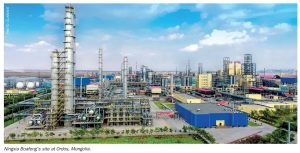
Johnson Matthey (JM) says that the three methanol production trains of Inner Mongolia Baofeng Coal-based New Materials Co., Ltd., a wholly owned subsidiary of Ningxia Baofeng Energy Group, were successfully commissioned in November 2024, February 2025, and March 2025, respectively. Located in the Wushenqi Sulige Economic Development Zone of Ordos City, Inner Mongolia Autonomous Region, this plant employs Johnson Matthey’s advanced methanol synthesis technology and catalysts, making it the largest single methanol plant in the world. Inner Mongolia Baofeng also stands as one of the largest chemical enterprises globally that produces polyethylene and polypropylene by using coal as a substitute for oil.
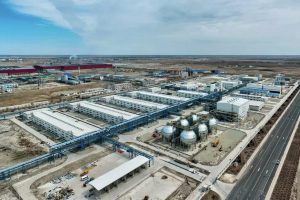
Jilin Electric Power says that it has commissioned one of the world’s largest green hydrogen and ammonia plants in Jilin Province. Jilin says that this is the world’s largest operating green ammonia plant, with a capacity of up to 32,000 t/a of green hydrogen and 180,000 t/a of green ammonia; the largest combined PEM and alkaline electrolyser system, combining 196 MW of alkaline electrolysis and 52 MW of PEM electrolysis, respectively; and the world’s largest block of solid-state hydrogen storage - 48,000 Nm3. The plant is fed by 800 MW of installed renewable power. The green ammonia is EU-certified under low-carbon fuel standards, and offtake agreements are in place with companies located in Europe, Japan and South Korea.

Clariant has signed a strategic cooperation agreement with Shanghai Boiler Works, a full subsidiary of Shanghai Electric specialising in energy conversion and the development of new energy applications, to jointly foster innovation in sustainable energy solutions. The partners will combine their expertise to advance green energy projects in China. The agreement is the result of close and successful cooperation in Shanghai Electric’s new biomass-to-green methanol plant in Taonan, Jilin Province, China. In addition to supplying its MegaMax catalysts, Clariant provided technical on-site support during the successful startup of the 50,000 t/a plant. The second phase of the project, with a capacity of 200,000 t/a green methanol and 10,000 t/a of sustainable aviation fuels (SAF), is expected to start production in 2027. The ceremony for the official signing of the partnership contract took place last week at the Clariant Innovation Center in Frankfurt, Germany.

Eurotecnica says that Zhongneng Chemical Co., Ltd., a major player in China’s nitrogen-based fertiliser sector, has selected Eurotecnica’s proprietary Euromel® melamine technology for a new world-scale facility with a nameplate capacity of 120,000 t/a.

Chinese electrolyser manufacturer LONGi Green Energy has begun construction on a $325 million green methanol project in Inner Mongolia that will combine biomass gasification with hydrogen from the company’s electrolysers. The project, being developed at the Urad Rear Banner Industrial Park, will process 600,000 t/a of agricultural waste to produce 190,000 t/a of green methanol in the first phase. Phase 2 will expand ethanol capacity to 400,000 t/a, with hydrogen coming from new electrolysers powered by 850 MW of wind and 200 MW of solar power. LONGi says that the project will cut carbon dioxide emissions by 1.2 million t/a, while adding more than 1 GW of wind and solar capacity to the region’s energy mix.